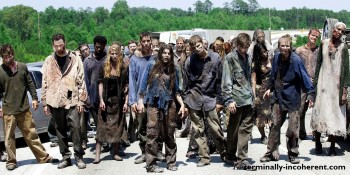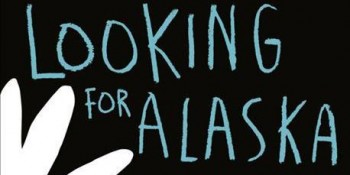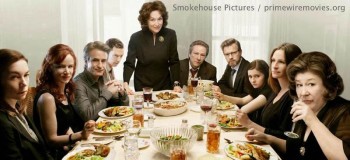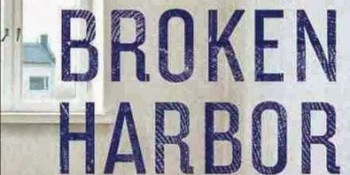Monsters, some say, are a means by which society can separate out the most abhorrent and depraved aspects within itself. If a man can walk into an elementary school and murder 20 children, it’s much easier for people to call him a monster — an “other” — than to admit he is a part of our own in-group.
There is much of the monster in us, and much of us in him. Perhaps this “othering” is a healthy process, enabling us to deal harshly with law breakers by removing our empathetic mercy and species-preservation instincts. White blood cells don’t attack cancer, after all, because they think the diseased cells are a part of the body.
Anyway, I suggest watching Joss Whedon’s Cabin in the Woods for a more thorough (and bloody brilliant) examination of those themes. I’m here to talk to you about words and stuff. So let’s take a look at three of the most popular monsters in media lately — vampires, werewolves, and zombies — where they come from, and what makes them tick.
Vampires
Nobody really knows where the word “vampire” came from. Best guess is the Slovak vrepit’ sa, which means “to thrust into or stick to.” I guess, because vampires … ah … thrust … their teeth into your flesh? I dunno. Anyway, the term came from Eastern Europe in the early 17th century, but similar figures appear all over the world long beforehand, from the Mayan camazotz, which was a head-snatching bat god, to the Japanese kappa, who were river-dwelling blood drinkers (and rapists to boot).
A lot of corpses were exhumed during the 17th and 18th centuries all over Eastern Europe, from Romania to Austria, as rumors were circulating of unexplained killings of people and animals. (Mind you, this was happening at the same time the United States was being founded and rational philosophies were spreading through German intellectual circles.) The dug-up bodies looked purple and bloated, like ticks, with blood streaming from their mouths — almost as though they’d been drinking human blood! (Of course, many bodies swell with gas after death, causing fluids to seep out. Oops.) These bodies were then variously decapitated, dismembered, driven into the ground with spikes, staked through the heart, mouth, and stomach, and stuffed with garlic.
Belief in vampires never completely died out, but the periods of mass hysteria associated with the phenomenon were relatively short-lived. Our current conceptions about vampires largely come from Bram Stoker’s 1897 horror novel Dracula, in which the vampires’ various strengths and weaknesses are spelled out explicitly. Anne Rice popularized the idea of a sympathetic vampire in the late 20th century, and, most recently, Stephenie Meyer made them sparkle. If vampires do exist, these more recent portrayals must grate on their nerves terribly.
Werewolves
“Wer” means “man” in Old English. There, we’re done! Nah, just kidding.
The idea of transforming into animals is not any newer than of drinking blood to steal someone’s power. It happened all the time, from the Norse berserker (“bear shirt”) to the Grecian gods, who turned into all manner of things in order to see what having sex with different species was like. Zeus transformed a guy named Lycaon into a wolf for attempting to feed the Thunder God baby meat (for some reason). Typically, people turn into wolves either from a curse, a pact with a demon, lying out under a full moon, or even drinking a specific kind of beer (probably an Oktoberfest).
While werewolves became popular in Eastern Europe about a century before vampires, they share a lot of commonalities. In Serbia, a single term (vulkodlak) is used for both. Vampires are sometimes purported to be able to change form to that of a wolf or to use wolves as “familiars” (a sort of mentally controlled animal). The sign of pointed fangs from the werewolf condition indirectly led to the idea of vampire fangs. Both monsters are frequently considered cursed or possessed by evil spirits. Werewolves, however, are mostly not already dead and can even be cured! The best cure is to stab them in the head with a knife (though sometimes exorcism, or even just scolding, will do the trick). The silver bullet thing was totally tacked on later, in the 1941 film The Wolf Man.
Turning into a wolf doesn’t seem that impressive, next to coming back from the dead and enthralling people. But wolves are scary! Imagine videos you’ve seen of guard dogs taking down men in heavy padding, then picture that with an animal of twice the size and bulk, razor sharp claws and teeth, coming at you with six of his buddies. Obviously, knife to the head is the best option available here. Good luck.
Zombies
The word “zombie” doesn’t have a cut-and-dry meaning, though it may be partially related to the Congolese nzambi, which means “god.” I guess because zombies defy death and can’t be hurt? It’s also alike to the word “simbi,” which is a kind of Haitian water snake spirit. (More specifically, the simbi is a Loa, or Lwa, which is an intermediary between the creator and humanity that can possess human hosts and ride them around.)
The origins of these creatures come from West African vodou, where sorcerer-shamans called bokor trapped human soul-bits in their fetishes (magic objects) to enhance their power. In Haiti, bokor killed people (typically, bad news bears that the common folk didn’t much mind dying) and brought them back to life as slaves. One theory is that the bokor actually used pufferfish powder to send their victims into a state of near-death, as well as inflicting brain damage to make them more susceptible to mental control upon their waking up (those that survived the ordeal, anyway).
How did these undead Haitian man-servants turn into the apocalyptic plague-drones we now associate with the term? The 1932 Bela Lugosi film White Zombie introduced American culture to the word and the concept, still used at the time to describe a sorcerer’s voodoo slave. From there, George A. Romero mixed the general idea of zombies with Richard Matheson’s vampires (found in I Am Legend), and Mary Shelley’s Frankenstein before it, to create his weird, shambling hybrids in the vastly influential 1968 Night of the Living Dead. Romero didn’t call them zombies in the film (or explain them at all, really) but used the term exclusively in its sequels. From there, the idea and the word became inextricably linked, and people have since mostly associated zombies with some scientific cause rather than vodoun magicks.
Yep, popular culture has come a long way from the original mythology that surrounds our various monsters. It’s almost hard to recognize them anymore. And once we do recognize them, it has certainly become more difficult to stab them in the head with knives. After all, they sure do look a lot like us, don’t they?









